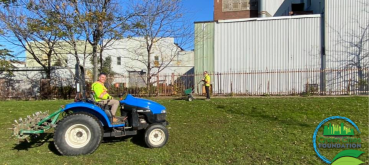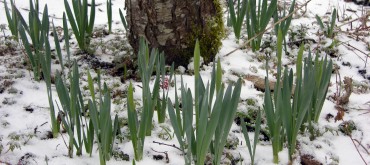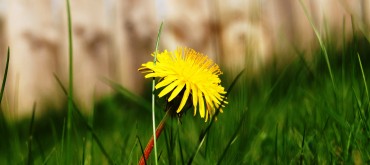Welcome to August everyone! As we make our way into the tail end of the summer, our lawns have endured quite an extended period of heat stress. We have spent many weeks sharing the best maintenance practices to best aid your lawn through this undesired environment; deep and infrequent water twice a week for 1-1.5 hours (mornings only), mowing each week no shorter than 3 inches (mornings only), and remaining on a balanced fertilizer program. This week we wanted to share more on what can become of your lawn if any of these maintenance practices fall out of balance.
We have had a few photos sent in from the community around us and our technicians have reported as well seeing quite a bit of summer diseases. These can include Anthracnose, Brown Patch, Dollar Spot, Fairy Ring, and Melting Out, to name just a few. Each one presents itself in similar ways where the lawn may lose its dark green appearance and start to form various patches where the disease was active. Summer diseases, like any other disease, require a host, a pathogen, and a favorable environment to develop. If we are not working to maintain your lawn’s favorite environment, it becomes susceptible as a host plant to these diseases. Diseases favor darkness, evening leaf moisture, and a weakened or stressed plant. That being said, it is important to ensure your waterings are spread out no more than twice a week and are not performed before the sun sets for the evening. It takes as little as two hours for a disease to develop if your lawn lies still and damp under the cover of night’s darkness.
Alongside that aspect, we also need to consider mowing. Mowing is a type of mechanical stressor that causes slight injury to all the leaf tips, automatically making them more susceptible to disease. Ever wonder why you hear your neighbor cutting their lawn early in the morning? Mowing just prior to the overnight hours can put your lawn at a higher risk of infections due to the fresh mower injury to the leaf tips that were unable to heal before darkness set in. Another beneficial tip when it comes to proper mowing is if you start to see disease develop anywhere, it is beneficial to wash your mower in between cuts to help prevent further spread and assess your mower’s blades to ensure they remain sharp through the mowing season.
The best defense whenever you suspect disease activity to be associated with some injury is to revisit your watering and mowing practices to ensure you are caring for the lawn properly. We want to minimize the stress we introduce to the lawn and ensure we work to avoid creating favorable disease environments. Water deeply and infrequently, cut high regularly, and avoid any evening practices whenever possible. The good news with turfgrass diseases is that warm weather diseases will not grow in cool weather and vice versa, so if the temperature changes when a disease is active, the damage will stop.
If you have any further questions or additional curiosity about diseases you may be noticing, please feel free to reach out to our team anytime.





